This excerpt is from The Enthusiast’s Guide to Portraiture by Jerod Foster.
Where does your subject look?
Your Portrait’s Subject’s eyes are important. Some might say they are the most important part of their body, and for good reason. Humans use information conveyed by others’ eyes to determine emotions and non-verbal cues. It’s little wonder we place strong consideration on how they appear in a portrait. We’ve already discussed how important it is to focus on the eyes in a portrait, but I’ll re-emphasize it since the viewing eye typically lands on the part of any image that is in focus. Since we most often want to look at the eyes of the portrait subject, focusing there is crucial. It’s also relevant to consider the direction the eyes are pointed. In this realm, it’s common to see two types of portraits: a portrait in which the subject is looking at the camera (Figure 1), and one in which the subject is looking somewhere else—typically outside the frame (Figure 2). Although you might gravitate to one over the other, it certainly helps to know why eye direction might be worth considering for your next shoot.
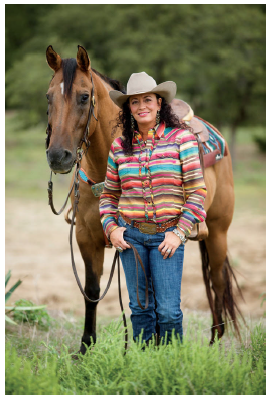
1 Eyes toward the camera mean direct engagement with the portrait’s viewers. ISO 400; 1/320 sec.; f/2.8; 160mm
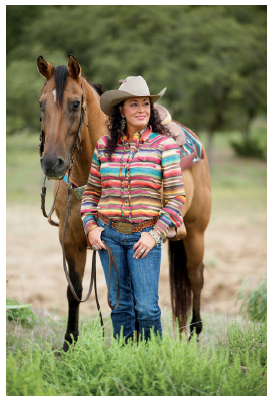
2 Eyes directed away from the camera create another level of audience perception. I try my best to get a portrait of a subject looking away from the camera each time I shoot a session.
Eyes pointed at the camera are eyes looking at the image viewer. There’s no better way to establish a direct connection between subject and viewer than having them look at and engage the camera. Although both types of portraits make a statement, eyes looking at the camera are more accessible and can cement a more intense relationship between subject and viewer. Viewers enjoy the opportunity to explore the subject through their eyes. Social characteristics are suggested by the eyes; for example, a viewer might quickly determine the trustworthiness of a portrait subject based on their ability to see the subject’s eyes. There is also a level of social formality in having the subject look at the camera (Figure 3). From professional headshots to senior portraits, eyes pointed toward the camera suggest respect, trust, and openness. Depending on the style of the portrait, and how the subject is coached, eyes pointed toward the camera can suggest a variety of emotions. On the other hand, having your subject look away from the camera complicates both the emotional characteristics of the portrait subject. A portrait in which the subject looks away from the camera is less formal. This is popular for lifestyle and family portraits because they offer a carefree, caught-in-the-moment appeal, even though many might not be so candid (Figure 4). Combined with smiles, distraction-free composition and great light, these types of portraits might come across as being more authentic and personality-filled than others.

3 When I photographed Renee Underwood, she was the vice president of marketing of a regional Mexican restaurant chain. Although I wanted the shoot to be relaxed, I wanted to maintain a level of formality by having her eyes engaging the camera most of the time. ISO 400; 1/40 sec.; f/4.5; 140mm
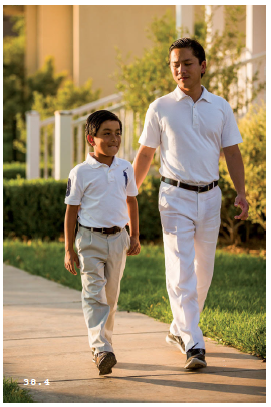
4 In family portraits, having the subjects engage each other with their eyes is almost more effective than if they were looking at the camera. It also conveys a more relaxed, informal perspective of the portrait and the subjects, even if they were coached to look at each other. ISO 200; 1/2500 sec.; f/2.8; 125mm38.3
“What do I do with my hands?”
Whatever you do, avoid the “fig leaf ” pose in which the portrait subject holds both of his hands together over his crotch. Under no circumstance should you use it. Ever. Alright, so I might be a bit hard on the “fig leaf ” pose, but without any instruction, many portrait subjects (especially males) resort to using this very common hand position because they’ve seen it before or believe it to be the most formal way of posing their hands (Figure 5). Certainly, it has its uses—it stresses formality, seriousness, and, when combined with a low angle, intimidation—but it can also be a bit unflattering and uninteresting. So, what do you do with your subject’s hands? The simple answer is to try to make them seem natural. For general portraiture, I encourage the subject to relax physically and see where their hands (and arms) fall. At this point, you can coach them to improve the appearance of the hands. Just as the “fig leaf ” pose can get a little old, so can arms hanging down at your subject’s sides. It’s good to give the hands something to do.
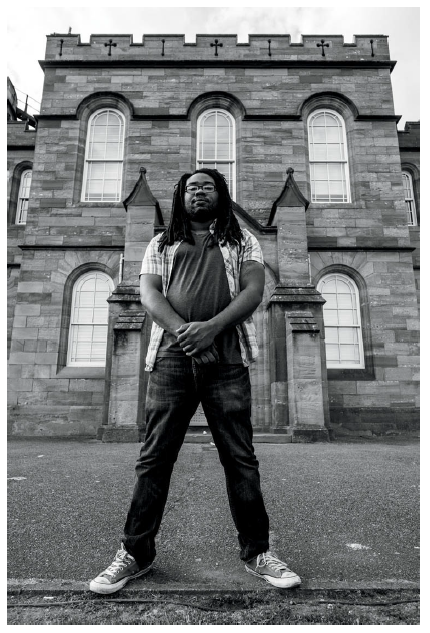
5 The “fig leaf” pose is one that, if done well, will probably go unnoticed. However, in many cases, it’s a good way to direct your viewer’s attention to the subject’s midsection and crotch. ISO 400; 1/550 sec.; f/4; 14m
My go-to hand and arm positioning is to have the subject cross their arms (Figure 6). You’ll like it or you won’t, and that’s fine. However, crossed arms are useful for everything from relaxed, candid-like portraits to serious, dramatic-looking images. The thing I like the most about crossed arms is that they make the subject look confident, regardless of whether the face suggests joy or sternness. However natural crossed arms may be for a portrait, one thing to avoid is the subject tucking their hands behind their arms (Figure 7). Coach the subject to bring their hands out and bend them up into the elbows (Figure 8). This will appear more relaxed and relieve visual tension created by the missing hands. For more relaxed portraiture, I also suggest having the subject place his hands in his pants pockets (Figure 9). This is an especially natural thing to do for male subjects. However, I make sure they don’t stick their hands in so far that the hands disappear at the wrists (Figure 10). Instead, I leave a portion of their fingers emerging from their pockets, indicating that they do have fingers. This also helps keep the subject from looking uptight and nervous. Speaking of fingers, photographers go back and forth on what to do with them. It’s important to keep your subject from holding their fingers too tightly together. Discourage your subject from clenching a fist unless it is an essential part of the portrait. Likewise, avoid hands in which the fingers are spread too far apart. Fingers are best when they appear comfortably spaced from each other (Figure 11).
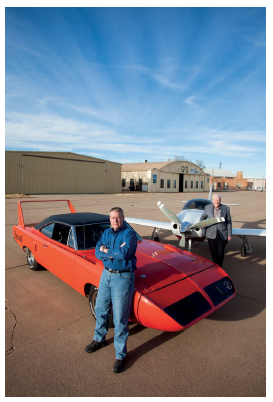
6 Having your subject cross their arms gives them something to do and establishes a level of attitude that, when combined with the right content, speaks volumes about their personality. ISO 100; 1/80 sec.; f/11; 22mm
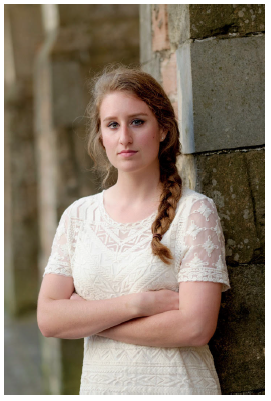
7 Avoid allowing your subject to stuff their hands inside their arms when crossing them. Not only does this leave the hands hidden, it also can convey a sense of nervousness or anxiety. ISO 400; 1/450 sec.; f/2; 90mm
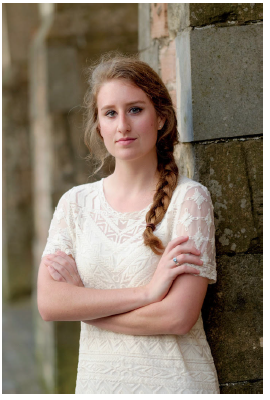
8 Instead, coach your subject to bring their hands out from behind their arms, and further give their arms dimension by turning the wrist up so the fingers point somewhat toward the subject’s shoulders.
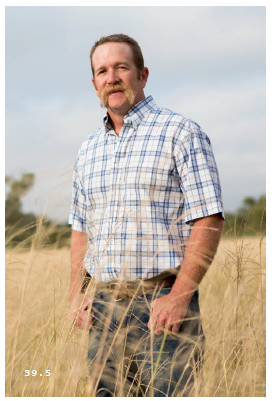
9 I wanted this portrait conservation director Jason Wrinkle to convey his personality, so I coached him to put his hands in his pockets. He then hooked his thumbs into his pockets, which reflected his background growing up close to agriculture and as a cowboy. ISO 100; 1/2500 sec.; f/2.8; 55mm
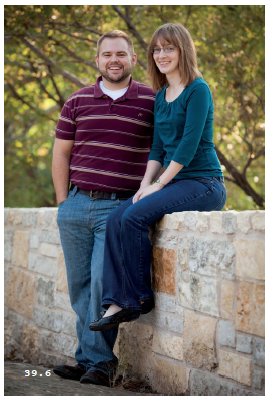
10 It’s the little things that count. Coaching the male subject to pull some of his hand out of his pocket would allow him to relax his arm more and separate it from his body. ISO 200; 1/160 sec.; f/4.5; 175mm
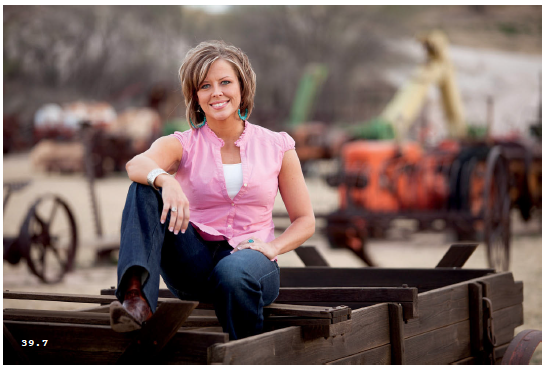
11 The subject’s right hand seems relaxed in this environmental portrait—it’s not clenched, nor are the fingers tightly pressed together—exactly the visual suggestion I wanted to create for the director of an outdoor museum. ISO 200; 1/320 sec.; f/2.8; 145mm
In many cases, you’ll more than likely coach the subject on what not to do with their hands, and they’ll pick up on it. Regardless of how well they accept that coaching, you’ll need to keep an eye on their hands to avoid those problematic issues, including awkward placement and letting them disappear behind other appendages, clothing, etc. One solution that really trumps them all (but, only if the portrait calls for it) is to give the hands something to do. As complicated as it makes other considerations of a portrait, putting something in the subject’s hands is a great way to create a natural presence for the hands and convey a narrative about your subject (Figure 12). Consider a cowboy holding a rope. He knows how to hold the rope, so it visually strengthens the visual notions presented in the photo. Of course, you don’t necessarily have to make your subject hold something in their hands; you could place them up against a rail and have them hold onto it or drape their arms and hands over it, for example (Figure 13).

12 For this conservationist’s portrait, I had him hold onto his binoculars, which gave his hands something to do. Likewise, doing so paired well with the direction he was looking—up, as if he was ready to take a closer look at a bird at a moment’s notice. ISO 400; 1/250 sec.; f/4; 155mm
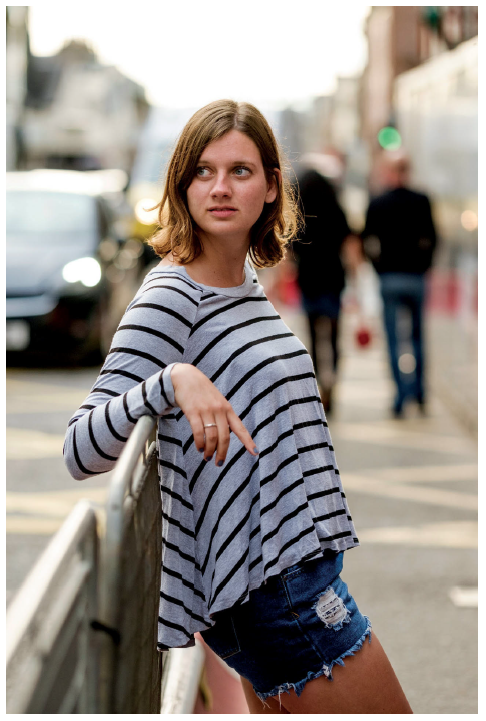
13 Draping an arm and hand over a railing offers new composition, new attitude and emotion, and it creates diversity among your shoot’s overall take. ISO 400; 1/950 sec.; f/2; 90m
